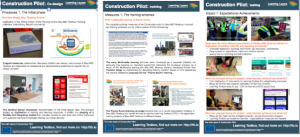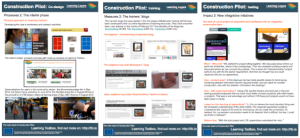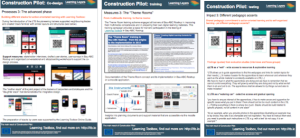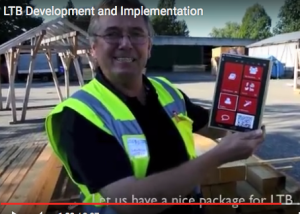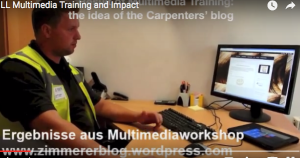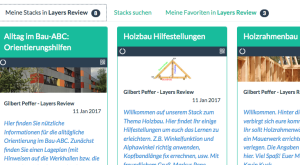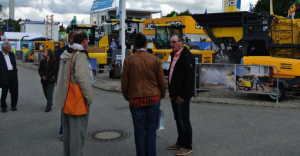What comes after “Learning Layers”? – Part Four: Further steps with Bau-ABC trainers and ‘health and safety’
One month ago I wrote the third post on follow-up activities of our completed EU-funded project Learning Layers (LL). In the three posts I informed on our initiative on digital media in the area of ‘health and safety’ (Arbeitssicherheit und Gesundheitsschutz). Before the Easter break I had had two meetings with full-time trainers (Lehrwerkmeister) of the training centre Bau-ABC. I reported on the starting points of the initiative, some positive surprises and some challenges to modify the approach already after the first two meetings. Then we had a few weeks’ break due to the Easter holidays and the major conference and trade fair Bohrtechniktage (the former Brunnenbauertage) on Bau-ABC premises in Rostrup.
Now I was back from my holiday trips and some of the trainers in Bau-ABC were also available. This time we didn’t have the whole group assembled. Instead, we came together last Friday as a smaller team drawing conclusions from our previous meeting. With Thomas Weerts (the shop steward for health and safety in Bau-ABC) and Josh Dreyer (responsible for health and safety in his trade) we had a productive brainstorming session and we came up with a working agenda for continuing the process with the wider group of trainers. Below I try to give a picture of the key points (and the slight reorientation of the approach):
1) Collection of key contents for ‘health and safety’ training in different trades
Our first conclusion was about the way we should go further with the mapping of key contents for training of apprentices regarding the theme ‘health and safety’ (Arbeitssicherheit und Gesundheitsschutz). So far we had collected all kinds of exemplary documents – both overarching documents for all construction trades and specific documents for particular trades and risk situations. From now on we set ourselves the task to identify key content areas and key documents that function well in apprentice training. As a next step we asked the trainers (Lehrwerkmeister) in different trades to identify such content areas and documents in their trades. (Josh Dreyer already presented his favourites for machine- and metal techniques.) Based on the proposals from different trades we will gather a collection of key contents/documents in domain-specific folders in Google Drive.
2) Shaping a common core and format for ‘health and safety’ training across the trades
Based on the above presented approach Thomas and Josh proposed that the trainers from different trades should agree on common core contents (and standard presentation) for the entire field of health and safety. Here they also emphasised the role of visualisations and the use of standard symbols as means to draw attention to the central messages.
3) Production of a set of videos to introduce the ‘health and safety’ contents (general and trade-specific)
Our third conclusion was related to the use of videos. Here I referred to the positive role of the Bau-ABC videos produced by Bau-ABC staff for the Learning Layers project (on possible uses of ‘Learning Toolbox’ in training and at work). Therefore, I proposed that we should produce similar videos when we have made progress in selecting the key contents (for different trades) and the common core contents (for all trades). However, here Thomas and Josh emphasised that we should try to develop a similar collection of exemplary videos that are available in the net.
4) Use of moodle as digital media to present the core contents and software solutions to support them
Our fourth conclusion was that we should firstly use the moodle ‘course’ that I had created for the theme ‘health and safety in construction work‘ as a platform to present the results of the above mentioned tasks. Then, in addition to this, we should present briefly other software solutions to be used in the training – such as the Learning Toolbox that was developed in the Learning Layers.
5) Preparation of proposals to develop learning units and learning designs in funded projects
Our final conclusion was that we should try to identify some simple exemplary cases to demonstrate the use of digital media in learning units (Bau-ABC training projects) and learning designs (modes of implementing them). Here, we should be looking for ways to continue their development with funded projects. Also, in this respect we should be looking at such innovations like serious games that focus on health and safety in construction work.
– – –
I think this is enough on the results of our meeting. Thomas Weerts has sent out a group message to Bau-ABC trainers responsible for training in health and safety to collect their proposals for key contents and documents. After the meeting I had a discussion with Melanie Campbell who emphasised the need for similar mapping exercise with focus on the training of Spanish apprentices in Germany (supported by the project Mobipro-EU). We will get back to these issues in a short while.
More blogs to come …
